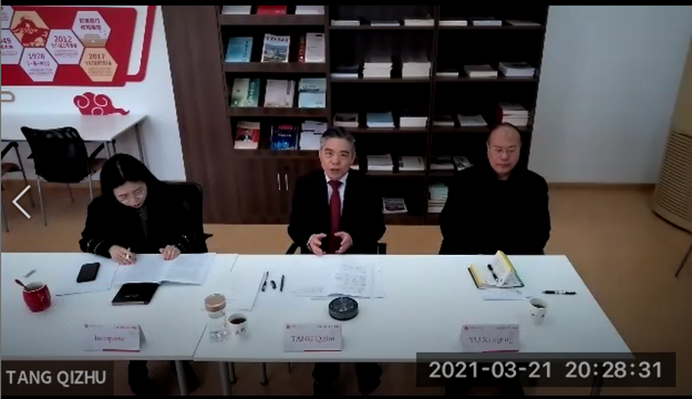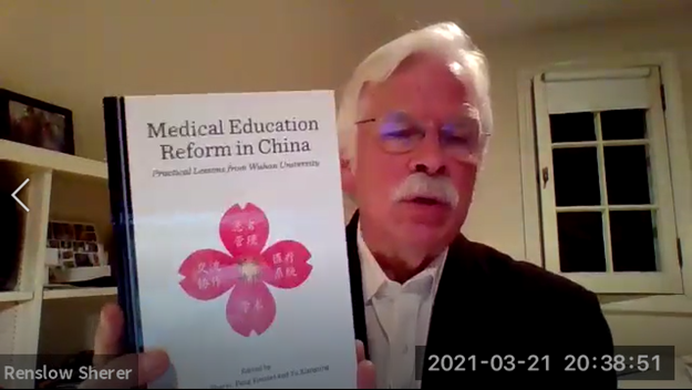Author: Wu Xia
Translated by: Cao Mi, Wu Xia
On March 22, invited by the University of Chicago Center in Beijing, Tang Qizhu, the vice president of Wuhan University (WHU) and director of Wuhan University School of Medicine (WUSM), and Yu Xiangting, the deputy director of WUSM were interviewed by China Daily, China Education Daily, and China.org.cn. A fruitful dialogue was conducted about the achievements and the significance of medical education reform between WHU and the University of Chicago (UC), together with Renslow Sherer, the professor from the Department of Medicine-Infectious Diseases of UC, and J. Michael Millis, the internationally renowned surgery professor and director of the University of Chicago Center in Beijing.
What is the essence of the reform? How does it motivate students? Are there any difficulties encountered in planning and implementing the reform? How to overcome them? What is the greatest advantage of the reform? What are the main achievements? What impact does it exert on medical education in China? What contribution can universities and hospitals make in fighting against the COVID-19?
Tang Qizhu introduced the major contents of the reform launched in 2008. With the competence-oriented approach, WUSM established a unique integrated curriculum, developed a series of medical integrated courses, and implemented learning by group discussion, which honed students’ clinical thinking and problem-solving capacity. The reform provides valuable experience for the curriculum reform in medical education at home and abroad. At the same time, Tang Qizhu also shared the experience and achievements gained by China, especially WHU, in fighting against the COVID-19. It is hoped that the two parties can further deepen cooperation in the future, especially in the fields of scientific research, patient diagnosis and treatment, and the prevention and treatment of chronic disease.
Yu Xiangting pointed out that the reform is competence-oriented. The integration of the basic clinical medicine courses, the adoption of small-sized class, and learning by discussion improve students’ thinking patterns and promote their abilities in expression, organization, and coordination. This reform provides experience for the reform of medical education of other universities and sets a model for the reform of medical education in China.
Sherer held that the reform keeps motivating students by stimulating students’ innovative thinking, integrating basic medical courses, shortening teaching time, and ensuring students’ physical and mental health. Freshmen are offered the opportunities to contact patients, which lays a good foundation for cultivating outstanding medical talents. There is a bright future for the reform between China and the United States, especially in research and development, medical education, and the prevention and treatment of infectious disease. In terms of the prevention and control of COVID-19, both the Chinese universities and the American universities can conduct more academic cooperation and make a shared contribution to crush the COVID-19.
Millis mentioned that although UC also cooperates with other hospitals and universities in China, the cooperation with WHU is the most concentrated, robust, and fruitful. He expressed the wish that more hospitals can participate in the training program when the pandemic comes to an end.


